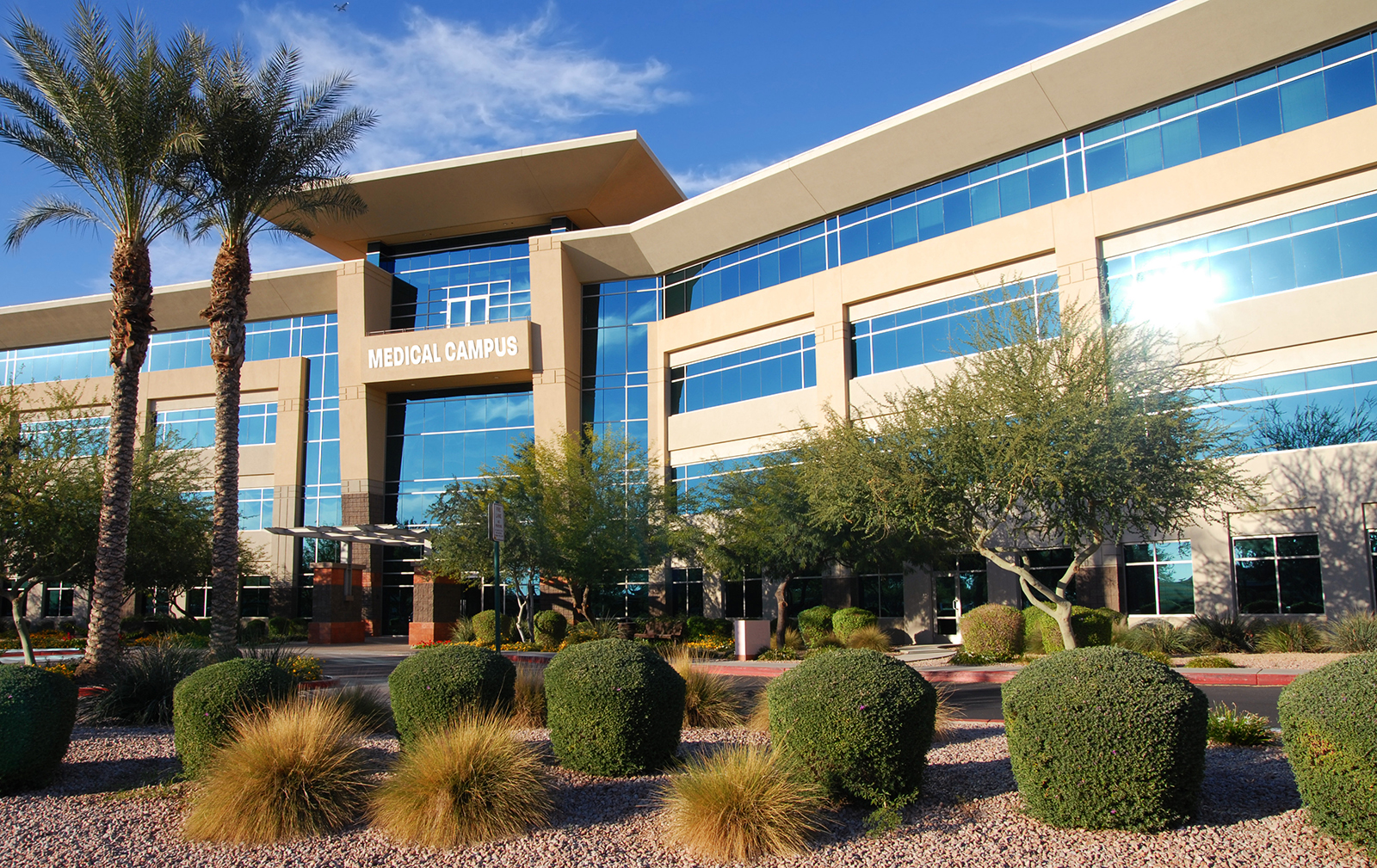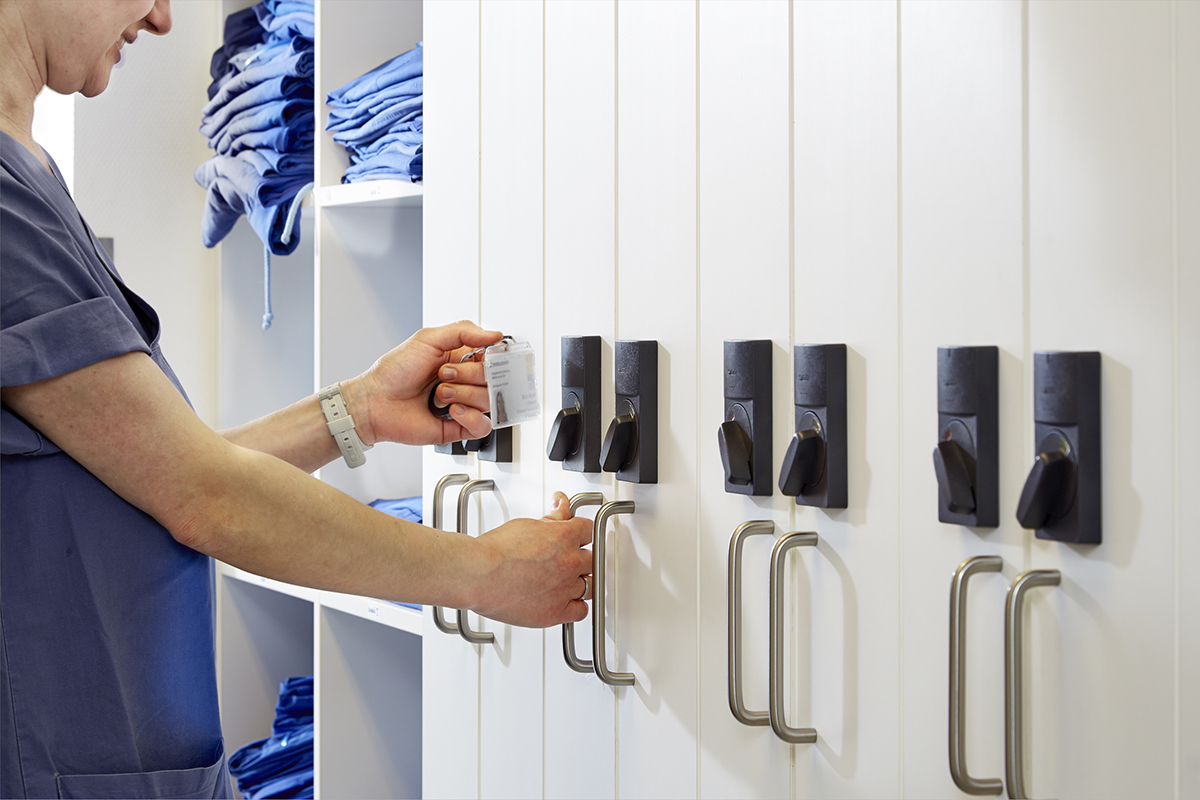Keeping patient data secure is a serious concern for medical professionals. Traditional lock-and-key systems do very little to help manage this problem, and create additional issues of their own. “Fortunately, wireless access control — a keyless alternative — eliminates the need for traditional physical keys while providing a higher level of security and centralized control,” says Cliff Brady, Salto Director of Industry Sectors Engagement, North America. Let’s explore how that works.
The Challenges
Controlling access to medical office spaces through the use of traditional keyed locks presents distinct challenges. When there are changes, either to staff or to their permissions, retrieving and reissuing keys can become a time-consuming and potentially problematic endeavor.
The American Medical Association states that physicians have an ethical mandate to guard patient information and only disseminate it with patients’ permission. In addition, the U.S. Health Insurance Portability and Accountability Act (HIPAA) and the European Union’s General Data Protection Regulation (GDPR) laws establish limits on who can access private health information. Penalties and fines for violations can be severe, even when a breach is accidental. With so much at stake, both for patients and healthcare practitioners, physical security for medical office facilities is of utmost importance.
However, these buildings tend to be accessible to many different individuals throughout the business day. With the boom in buildout of medical office spaces, more doctors, nurses and patients are moving through these facilities than ever before, and not everyone should be permitted in every area.
A Better Way to Manage Physical Security
Brady notes that keyless locking systems can greatly enhance compliance. Instead of mechanical locks, battery-powered electronic locks can be installed, and these do not require complicated wiring. “This system screens individuals for authorized access using established credentials, protecting patient privacy and confidential information,” he says. Users can only open doors to their permitted zones; this is accomplished by using a single remotely programmable key fob, or by an app on an electronic device, such as a tablet or cellphone.
Keyless systems also allow administrators to track who accessed which areas of the building and when. “This provides an audit trail and affords effective tracking of staff activities,” says Brady. He adds that access management is easily granted or revoked for individuals or groups as needs dictate, and this process can be managed remotely. “This is particularly useful for medical practices that have multiple locations and offsite facilities,” he adds.
In emergencies, wireless access control systems like Salto’s provide safe and efficient egress with panic bars for easy opening of doors. A monitoring feature also notifies the administrator if a door is accidentally left open or if there are unauthorized access attempts. In a situation requiring a lockdown, Salto Space technology can quickly secure the premises, restricting or preventing access altogether.
Infection Control Benefits
Wireless access control doesn’t only protect the physical premises of medical offices and sensitive medical data; it is also important in protecting patients’ health. Brady says, “This technology goes beyond controlling access to physical spaces in the interest of regulatory compliance. Infection control can also be better managed by limiting access.”
For example, the recent Covid-19 epidemic created the need for contact tracing within patient populations. The data provided by electronic access control supported these tracing efforts by collecting data on who had been in the proximity of infected individuals and monitoring their exposure risks.

Impact Felt Across Entire Facilities
A keyless access system can assure medical practitioners that they are helping prevent data breaches and the spread of infectious disease. Having quick access to various parts of the building without needing to manage physical keys also makes them more efficient.
Facility administrators can track arrival and departure of staff and vendors, immediately grant and revoke access from wherever they happen to be, and ensure the building is compliant with regulations.
Patients can rest easy, knowing that their data has an extra level of protection by limiting access to unauthorized individuals, and that they are protected against disease by an extra element of physical security.
Brady adds, “Wireless access control also allows management to analyze patterns such as occupancy levels for the purposes of optimizing resource allocation, to identify high-traffic areas, and to adjust workflows and resource planning accordingly.”
The benefits of keyless access systems like Salto’s include improved compliance, greater convenience, better patient safety and enhanced physical security.
Related Stories
| Aug 11, 2010
Stimulus funding helps get NOAA project off the ground
The award-winning design for the National Oceanic and Atmospheric Administration’s new Southwest Fisheries Science Center replacement laboratory saw its first sign of movement last month with a groundbreaking ceremony held in La Jolla, Calif. The $102 million project is funded primarily by the American Recovery and Reinvestment Act.
| Aug 11, 2010
National Intrepid Center tops out at Walter Reed
SmithGroup, Turner Construction, and the Intrepid Fallen Heroes Fund (IFHF), a nonprofit organization supporting the men and women of the United States Armed Forces and their families, celebrated the overall structural completion of the National Intrepid Center of Excellence (NICoE), an advanced facility dedicated to research, diagnosis, and treatment of military personnel and veterans sufferin...
| Aug 11, 2010
Alabama hospital gets a four-story addition
Birmingham, Ala.-based Hoar Construction has completed the North Tower addition at Thomas Hospital in Fairhope, Ala. The four-story, 123,000-sf addition accommodates an ER on the first floor, 32 private patient rooms and nursing support on the second and third floors, and room for 32 planned patient rooms on the top floor.
| Aug 11, 2010
America's Greenest Hospital
Hospitals are energy gluttons. With 24/7/365 operating schedules and stringent requirements for air quality in ORs and other clinical areas, an acute-care hospital will gobble up about twice the energy per square foot of, say, a commercial office building. It is an achievement worth noting, therefore, when a major hospital achieves LEED Platinum status, especially when that hospital attains 14 ...
| Aug 11, 2010
Hospital Additions + Renovations: 14 Lessons from Expert Building Teams
Two additions to a community hospital in Ohio that will double its square footage. A 12-story addition on top of an existing 12-story tower at Houston's M.D. Anderson Cancer Center. A $54 million renovation and addition at the University of Virginia Medical Center. A 67-bed, $70 million addition/renovation to a community hospital that is only five years old.
| Aug 11, 2010
Research Facility Breaks the Mold
In the market for state-of-the-art biomedical research space in Boston's Longwood Medical Area? Good news: there are still two floors available in the Center for Life Science | Boston, a multi-tenant, speculative high-rise research building designed by Tsoi/Kobus & Associates, Boston, and developed by Lyme Properties, Hanover, N.
| Aug 11, 2010
3 Hospitals, 3 Building Teams, 1 Mission: Optimum Sustainability
It's big news in any city when a new billion-dollar hospital is announced. Imagine what it must be like to have not one, not two, but three such blockbusters in the works, each of them tracking LEED-NC Gold certification from the U.S. Green Building Council. That's the case in San Francisco, where three new billion-dollar-plus healthcare facilities are in various stages of design and constructi...
| Aug 11, 2010
Holyoke Health Center
The team behind the new Holyoke (Mass.) Health Center was aiming for more than the renovation of a single building—they were hoping to revive an entire community. Holyoke's central business district was built in the 19th century as part of a planned industrial town, but over the years it had fallen into disrepair.
| Aug 11, 2010
Right-Sizing Healthcare
Over the past 30 years or so, the healthcare industry has quietly super-sized its healthcare facilities. Since 1980, ORs have bulked up in size by 53%, acute-care patient rooms by 77%. The slow creep went unlabeled until recently, when consultant H. Scot Latimer applied the super-sizing moniker to hospitals, inpatient rooms, operating rooms, and other treatment and administrative spaces.
| Aug 11, 2010
Great Solutions: Healthcare
11. Operating Room-Integrated MRI will Help Neurosurgeons Get it Right the First Time A major limitation of traditional brain cancer surgery is the lack of scanning capability in the operating room. Neurosurgeons do their best to visually identify and remove the cancerous tissue, but only an MRI scan will confirm if the operation was a complete success or not.







